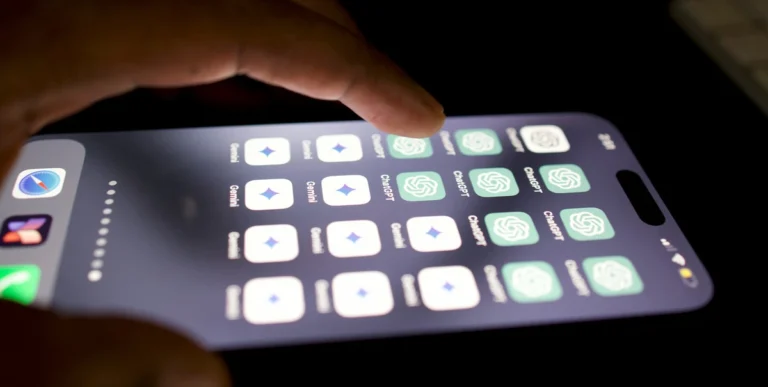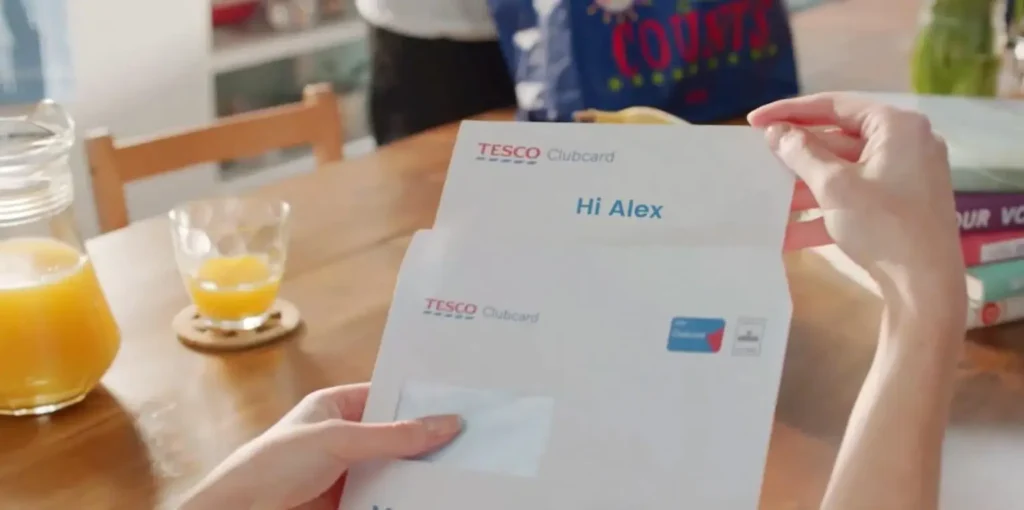Gone are the days when businesses could enhance the customer experience with snail mail whose only personalized element was an individual address. Now, with emerging technology like artificial intelligence on the scene, even emails that say “Hey Tania!” with no other uniquely relevant content are yesterday’s innovation. (And let’s not even get started on the “Hey [First Name]” salutations that hit our inbox every now and then.)
As AI, including generative AI, evolves — OpenAI’s update to its GPT technology, GPT-4o, shows the train has no intention of slowing down — the opportunities surrounding real-time personalized messaging in content creation are only increasing.
From digital content platforms like Netflix recommending shows to financial institutions like American Express prioritizing Global Business Traveler customer care, AI tools are helping businesses enhance the customer journey long after the initial buy-in. The reality is that AI advancements are powering the personalization behind the latest content marketing strategies.
Here’s how you can hop on the AI train for yourself to supercharge your content marketing efforts.
How AI Optimizes the Personalized Content Pipeline
Without even thinking about AI enhancements, personalization is a must in the modern marketing era.
Personalized content doesn’t require AI. All you need is a customer data set with basic personal or demographic information, perhaps their account history or other interactions with your brand — the kind of data you might have in a good customer relationship management system. Personalized content can come in a variety of forms. Text is the obvious one, but don’t forget that visual marketing is best. Explore practical use cases for personalized graphics, video and even GIF marketing.
Personalized Video is especially impressive (particularly considering it’s 3x more likely than generic video to make someone recommend a brand), but it’s easy and doesn’t take much lifting to get off the ground. You can even implement automation into the process to make it more streamlined.
When we’re talking about scaling these personalized experiences, AI can really come in handy.
Using AI can help marketing campaigns move faster by taking the load off the creative process. Take Spotify, for example. They use AI algorithms and automation to deliver Discovery Weekly and other playlists to individual users based on their unique listening preferences. Without AI, this would be an impossible feat — after all, Spotify has 239 million subscribers around the world!
With content personalization a must today, AI makes a high volume of content sustainable, giving creatives and strategists more time to think about what’s possible instead of spending all their time getting the last project off the ground.
Post on
How Personalized AI Content Works
Without getting too technical, AI technology enhances content creation through a few different methods.
Think of an entire data set as a gigantic thrift store warehouse — like the world’s biggest Goodwill. If you’re looking for an outfit for a business trip, you not only need to know exactly what you’re looking for, but also where to find it. And then you have to go and compile your articles of clothing to make the outfit. AI takes your prompt (in this case, the business trip outfit) and sifts through that data set (the thrift store), delivering the end result to you in no time.
In generative AI, neural networks can work to analyze text, audio, images, and even video. Based on the application, it can spit out the content you requested in whatever form.
For example, a marketing professional can use an AI method called retrieval-augmented generation (RAG) to write a white paper based on several internal presentations that discuss the benefits of their product or service..
Whereas OpenAI’s GPT-4o and similar models sift through the entire internet and prioritize an experience similar to that of conversing with chatbots, RAG works within a limited data set and focuses on delivering requested content based only on the info provided. This is helpful from a brand perspective when you want to create content that’s reliable. You simply limit the source to your brand content, as we do for the AI videos we create.
Tip: AI is an umbrella term, and AI content creation can include anything from natural language processing to predictive analytics. When looking into a third-party service, be sure to understand exactly what you’re implementing.
Benefits of AI Content Personalization for User Engagement
AI-enabled content personalization is not without its limitations and even risks (we’ll dig into that below so you can dive into the process with a healthy perspective). However, the benefits of a well-thought-out AI content marketing strategy are undeniable.
- Scale: You can create more content in less time, allowing your content strategy to grow along with your company. From email to social media platforms and everywhere in between, you’ll reach the touchpoints that matter most to your customers.
- Speed: You can act fast, delivering relevant content right when it matters most. Pivot quickly to share content for last-minute sales, product launches or even changes in the market (like how forbearance rocked the mortgage industry), In the fast-moving realm of on-demand digital content, your reaction time can make a world of difference.
- Simplicity: Once you train your team on the correct way to implement AI into workflows, the user experience for the person creating the content is much more straightforward than manual content creation. Now everyone on the team can be a content pro!
- Satisfaction: Because of AI’s impact on scale, speed, and simplicity, customer satisfaction becomes much more attainable with AI content personalization. (Naturally, so do profitable conversion rates.)
Examples of AI-Powered Content Personalization
What can AI content personalization look like? As it turns out, it can look like a lot of different things. Here are some good examples.
1. Wayfair’s AI: Decorify
Home decor ecommerce company Wayfair developed its own generative AI platform, called Decorify, to help new and existing customers envision their spaces in a digitally precise way. Users upload a picture of their room, test out different layouts and furniture styles, and even shop directly from Decorify for more than 150,000 Wayfair products. The platform also incorporates product recommendations into the mix for added value.
The “shoppable AI interior designer,” as it calls itself, is a professional when it comes to customer engagement. The more people can literally visualize these items in their space (and subsequently in their life), the likelier they are to make the purchase.
2. From digital report to interactive video
Got a webpage or report you want to transform into an incredible video? AI can do that, too. Specifically, it’s a job for our Enterprise AI Video.
Enterprises who want to increase user interactions by offering video instead of stagnant digital content can input a webpage or PDF and receive a video output complete with script, voiceover, animation, footage, and interactive call-to-action button. Take this video, for example. It went from a dense report to an easy-to-watch video through one simple prompt, proving that video creation doesn’t have to be a drag.
Market Study

3. Amazon’s ecommerce and movie recommendations
The wide world of Amazon has gone through many changes over the years, and its product and movie recommendations have gotten better and better along the way. By acknowledging customer preferences and developing a system that caters to that, Amazon has developed a self-propelling mechanism.
Amazon technologists used a type of deep neural network called an item-to-item collaborative-filtering algorithm. Its effectiveness is what keeps people watching or buying without having to sift through an entire catalog of irrelevant items.
A process like this is no easy feat — Amazon invested tons of money into hiring experts to build their own unique system. However, with recommendation technology on the cutting edge, there’s no shortage of third-party providers serving this same space for retailers who want to keep their customers in the loop.
4. Text-to-video AI
Through a combination of AI video creations and customer segmentation, you can promote your business in a way that captures attention from the get-go.
Using our Enterprise AI Video technology, enter a simple text prompt and get a video output. Businesses can customize their AI-generated content with text-to-video AI by defining the assets and data points the model can pull from and determining customer information they want to include in each video.
5. Motion’s AI-driven customer service
AI-powered chatbots are developing more personalization, and more power, as we speak. Rather than simply chatting with users, the chatbot on the AI-powered productivity app Motion finds out what it needs to do, and then it gets it done.
For example, one user wanted to change their subscription plan and Motion’s chatbot did it on their behalf rather than simply directing them on how to maneuver the platform’s UX.
This capability emphasizes one of Motion’s key value propositions, which is to serve as an executive assistant of sorts and take some of the pressure off of being a busy professional. It’s a personalization strategy, but it also feels akin to a personal interaction.
6. Text-to-image AI
Midjourney, a generative AI text-to-image platform, has a lot of potential in augmenting personalized customer experiences.
One interesting use case is to generate unique digital assets to serve as profile badges or in-app rewards. For example, professional networking sites can generate personalized badges for their members, which they can then add to their LinkedIn profile. These badges can be similar to, say, HubSpot Academy certification badges for LinkedIn.
Another content personalization use case for Midjourney is to generate a unique image you can share on your social media channels, say, to shoutout a giveaway winner. Imagine you’re a travel brand that just hosted a contest asking people to name their favorite things to do on vacation. You could use Midjourney to create a custom collage for the winner with all their favorite activities — no matter how bizarre, Midjourney can work it all into one image.
Here’s one take on that. Fun, right?
There are plenty more use cases for text-to-image technology for creative personalization, but hopefully, this gets you started.
What To Know Before You Dive Into AI Personalization
Without the right precautions, AI implementation can cause a bit of headache. According to a report from software company AvePoint, 45% of companies who instituted AI solutions experienced data exposure. Data leaks can come in the form of external parties getting access to company data or even the wrong employees getting a hold of information they shouldn’t have access to.
With that said, before embarking on AI personalization efforts, consider:
- Shoring up permissions: Many companies operate on the principle of least privilege, which states that employees should only have access to the information they need to do their job well.
- Vetting vendors: Look into how any vendors manage data privacy and security. Look for ISO 27001 and SOC 2 Type 2 compliance, globally accepted credentials which we (and other reputable personalization platforms) have.
- Collecting the right assets and information: AI content creation will only be successful if your model has access to high-quality branded assets and user data points. Make sure you have a high-quality data set to work with.
In other words, get your data house in order before inviting over your new best friend, AI.
AI Aligns With Content Personalization at Scale
It’s one thing to talk about what can benefit your business — more marketing, more personalization, more this and that. But all of that doesn’t mean a thing unless you execute on it. Of course, that’s easier said than done, but AI can help.
With our Enterprise AI Video tool, you can generate the video content you’ve always wanted to produce, not only at a high quality, but also at a scale that can truly make a difference in your business’s bottom line.
By dropping in a simple prompt or a PDF or even connecting our AI to your knowledge base, you can generate videos that speak to your customers personally, capturing their attention beyond the swipe.
With solutions like this available to enterprises across industries, there’s no excuse left to miss out on sharing personalized content at each touchpoint throughout the customer journey.
Ready to get started?








